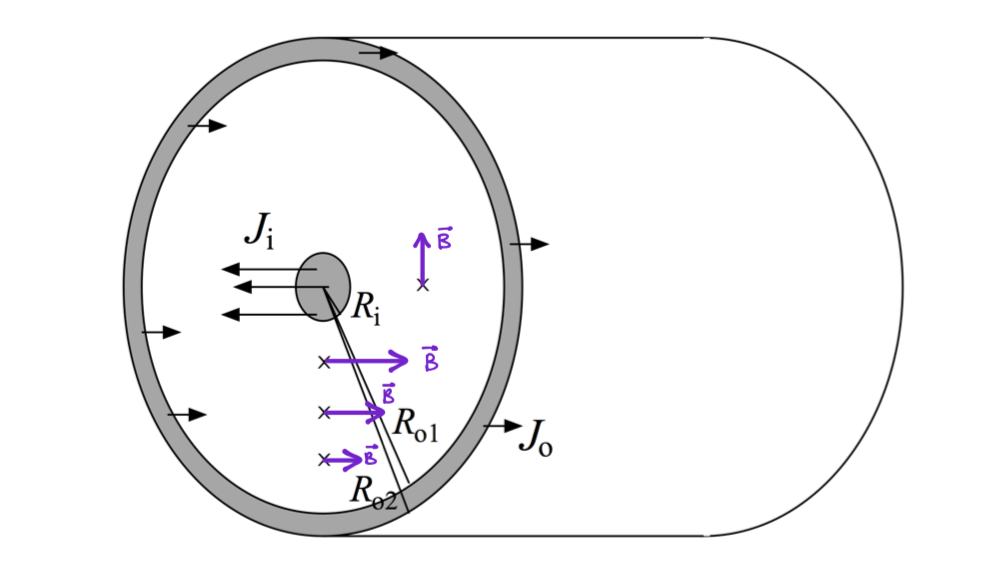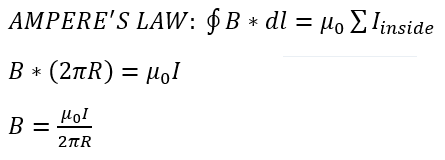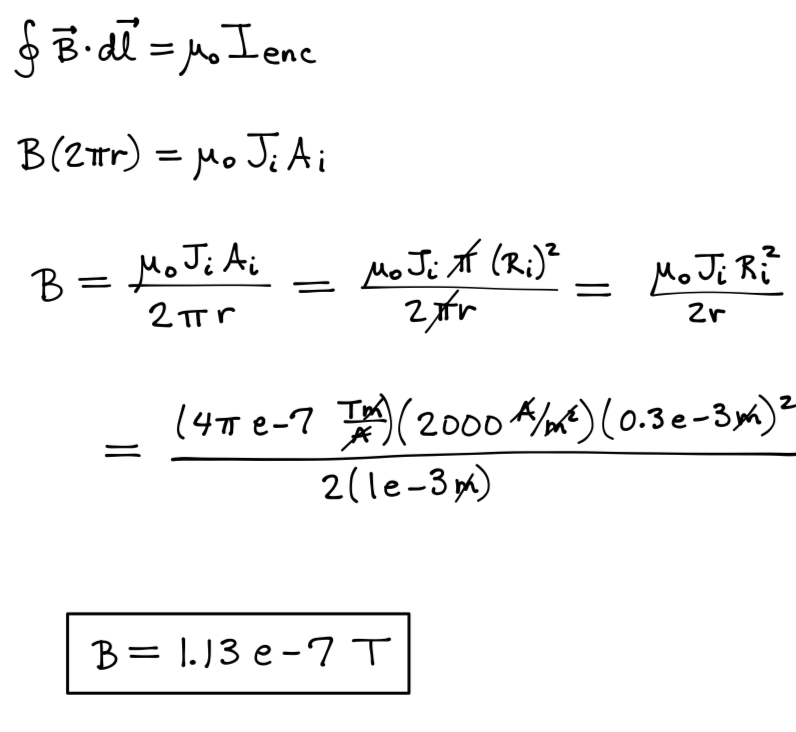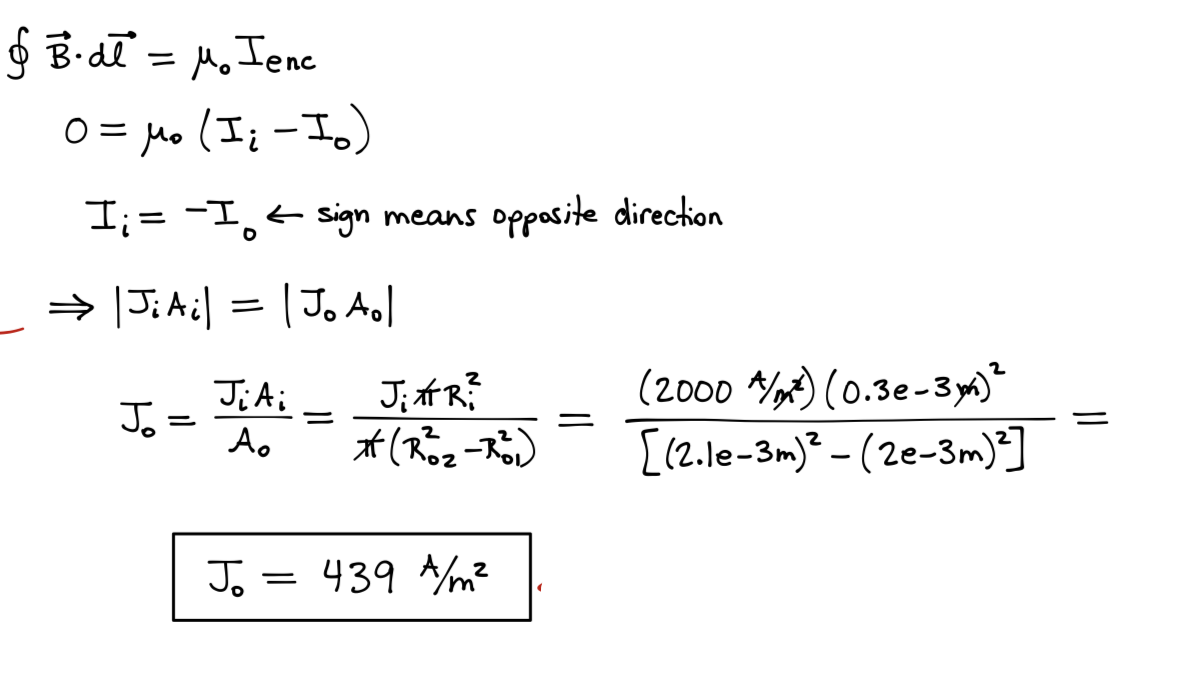Magnetic Field of Coaxial Cable Using Ampere's Law
Edited by Joe Zein Fall 2017;
The Main Idea
A coaxial cable consists of two cylindrical channels, which is how it derives its name (copper wire and copper mesh).
One of the cylinders carries the current in one direction, surround by an insulating region, and a second cylinder carries the current in the opposite direction, and they are both concentric along the same axis.
Coaxial cables are common household items used in many electronics because of their ability to avoid external interference from other fields and for their ability to carry currents for long distances and to be able to exclusively carry their signal in the region between the two conductors.
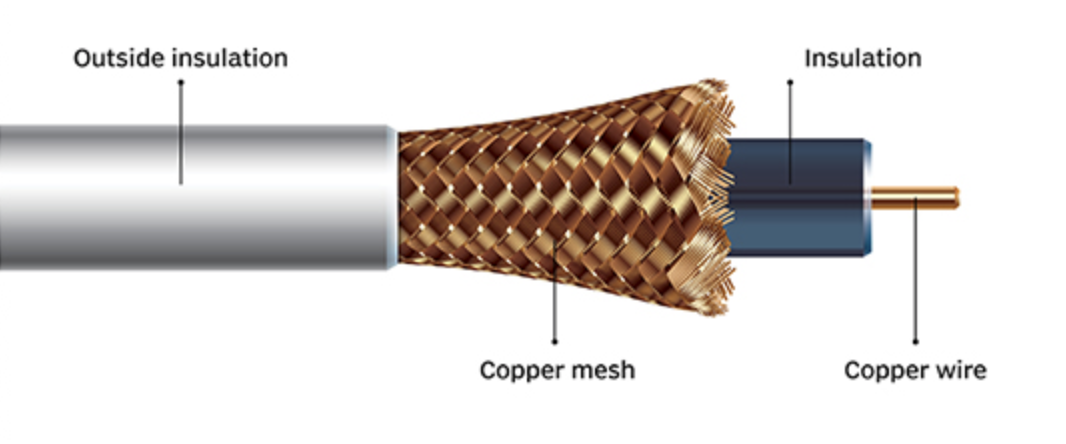
The magnetic field of a coaxial cable can easily be found with the application of Ampere's Law.
A Mathematical Model
Ampere's Law
We know that moving charges create a curly magnetic field around their trajectories. As a result, a current carrying wire creates a curly magnetic field arounds it.
Reversely, observing a curly magnetic field in space implies there should be some current producing it.
Ampere's law is a quantitative relationship that relates: 1-the sum of the magnetic field measured at infinitely many points around a path AND 2-the current enclosed in that path.
Example
Current flows up the inner conductor and returns down the outer conductor. The inner conductor has radius Ri; the outer conductor is a cylindrical shell with inner radius Ro,1 and outer radius Ro,2. Currents in the inner and outer conductors are uniformly distributed throughout their cross-sectional areas with densities (current/area) Ji and Jo, respectively. Ji =2000A/m2;Ri =0.3mm;Ro,1 =2.0mm;Ro,2 =2.1mm.
The goal here is to determine magnitude and direction of magnetic fields at different locations in and out the wire.
For this, we simply have to apply Ampere's Law to the problem and imagine an Amperian surface with a radius of r:
Case A: Ri< r < Ro,1.
Direction.
To evaluate direction we make use of the right hand rule. The current enclosed by a circle of radius r is the current carried by the central wire. It points out of the page. If we put our thumb in this direction, we see our fingers curling Counterclockwise. The purple arrows show the direction of B at different locations (different r).
Magnitude.
We know that:.
What would the magnitude of the magnetic field be at r = 1mm?
Case B: r > Ro,2.
Magnitude.
Show that B would be zero if and only if current is equal and opposite in direction. Also, calculate J_not, the current density in the outer copper wire.
Connectedness
How is this topic connected to something that you are interested in? How is it connected to your major? Is there an interesting industrial application?
Coaxial cables are also used to support medical devices, which I as a Biomedical Engineer will be focused on developing and maintaining. Since the coaxial cables are effective avenues of transmission that need to avoid electromagnetic interference, they are used in ECGs, EEGs, and CT scanners.
History
Oliver Heaviside designed the Coaxial Cable in 1880 in England. Over the years the cable was enhanced before its use as the first transatlantic cable in 1956. The cable was, as mentioned, was developed due to its advantages over previous cables in that it provides constant conductor spacing and resistance over electromagnetic interference, making it useful in long distance transmission lines.
See also
Page for Ampere's Law: Ampere's Law
More applications: Magnetic Field of a Toroid Using Ampere's Law and Magnetic Field of a Long Thick Wire Using Ampere's Law
External links
https://www.youtube.com/watch?v=IMoN6MVgOgA
References
Chabay, Sherwood. (2011). Matter and Interactions (3rd ed.). Raleigh, North Carolina: Wiley.
Coaxial cable. (n.d.). Retrieved November 27, 2016
Exam 4 Fall 2015 Question 3

